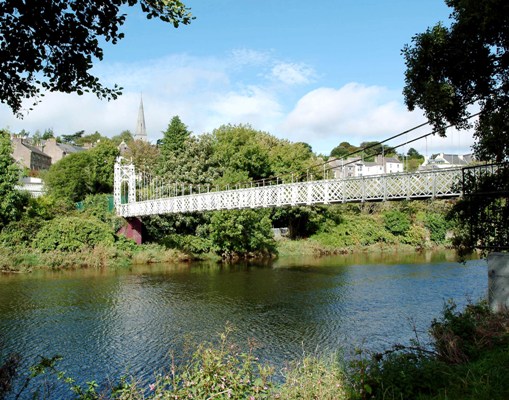
The estimated €1.7 million works on the city’s iconic bridge will address extensive corrosion and damage to the heritage structure. Daly (Shakey) Bridge is unique in Ireland as the only surviving pedestrian suspension bridge of its type and age.
Rehabilitation and conservation works on the main steel structure of the 50.9 metre suspension bridge will include:
It is intended that the works will extend the life of this important heritage structure and protect and improve an important public amenity.
It is expected that the works will be completed and the bridge reopened to pedestrians by Easter 2020.
Pedestrian Access:
Pedestrian access to Daly (Shakey) Bridge and its approaches will be prohibited throughout the works. The existing alternative pedestrian route between Ferry Walk and Sunday’s Well Road via Mardyke Walk/Western Road/Thomas Davis Bridge (near the Sacred Heart Church) /Sunday’s Well Road will be maintained.
Access to the existing riverside pedestrian walkway between Fitzgerald’s Park/Ferry Walk and Western Road/ Thomas Davis Bridge will be also maintained subject to normal time restrictions.
Design/Construction Team:
Cork City Council appointed a multi-disciplinary Design Team with experience in the repair and rehabilitation of heritage and protected structures. This Design Team includes RPS Consulting Engineers, with offices in Ballincollig, JCA Conservation Architects, based locally at Sunday’s Well Road, Corrosion Solutions & Inspection Services from Dublin as well as in-house expertise.
Cork City Council recently appointed L&M Keating Ltd. of Kilmihil, Co. Clare, as main contractor for the works. L&M Keating Ltd. has recently completed construction of the Mary Elmes Bridge providing pedestrian and cyclist access between Merchant’s Quay and St. Patrick’s Quay in Cork City.
Work Chronology:
It is anticipated that works will commence in mid August. The contractor’s site compound will be setup on the south bank of the river at Ferry Walk, directly adjacent to the north western corner of Fitzgerald’s Park.
The main bridge structure will be dismantled in sections, as per originally assembled, and lowered onto a barge. This will make the handling and transportation process more manageable and safer. The barge will be moved to the south bank where each of the sections will be lifted separately onto a flatbed transporter and taken to the off-site specialist workshop.
Once delivered to the specialist workshop, each of the bridge sections will be extensively cleaned with all corrosion removed. Defective steelwork will be repaired followed by the application of a protective coating and layered repainting under factory conditions. In accordance with Conservation Best Practice the guiding philosophy for these works will be to conserve as found. It is intended to return the bridge to site in sections as previously removed and re-erect as per the dismantling process in reverse.
Once the main bridge structure has been dismantled and removed, both remaining bridge towers will be encapsulated to prevent any material from entering the adjacent watercourse. Works to each tower will be undertaken in-situ, commencing with extensive cleaning and removal of corrosion. Defective steelwork will be repaired followed by the application of a protective coating and layered repainting. During the same time period, the existing suspension cables will be removed and replaced with new cables currently being manufactured in Italy.
Dismantling the bridge for repair off-site under factory conditions is considered best practice and has been undertaken successfully on a number of similar bridge schemes across Europe.